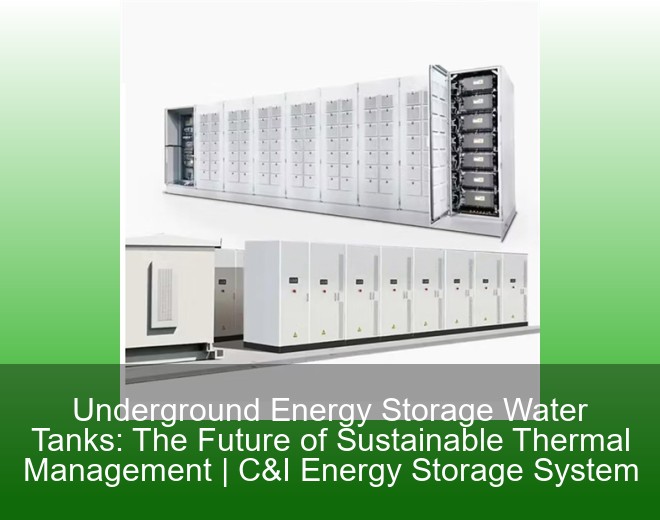
Let's start with the basics: thermal energy storage (TES) is like a giant battery for heat. Instead of storing electricity, it captures excess thermal energy for later use. Think of it as your kitchen Thermos® – but scaled up to power cities or heat entire neighborhoods. In our race toward net-zero emissions, this technology is becoming the Swiss Army knife of renewable energy systems. [2021-09-17 21:07]

Your smartphone battery dies during a video call, but what if your entire city experienced a "low battery" warning? That's where energy storage materials and devices become the unsung heroes of our electrified world. As renewable energy adoption skyrockets, these technologies are reshaping how we store sunshine, harness wind power, and keep our grids humming 24/7. [2025-03-15 06:46]

Ever tried deciphering a reference list that looks like alphabet soup? You're not alone. In the fast-paced world of energy storage materials research, proper journal abbreviations are the secret handshake of academic communication. Let's crack this code together while exploring what makes these journals tick. [2022-11-25 09:21]

when you flip a light switch, you're probably not thinking about grid energy storage battery materials. But here's the kicker: these unsung heroes are why your Netflix binge doesn't turn into a blackout saga during peak hours. This article isn't just for lab-coat-wearing scientists. It's for anyone who: [2022-05-31 21:36]

Let's face it – when you hear "lead-acid battery recycling," your first thought might be "how much cash can I get for this car battery collecting dust in my garage?" But here's the kicker: energy storage lead-acid battery recycling prices aren't just about quick payouts. They're reshaping entire industries, from renewable energy storage to electric vehicle manufacturing. In the U.S. alone, we recycle about 99% of lead-acid batteries – higher than aluminum cans or glass bottles. But why does this matter to you? Stick around, and we'll break down the dollars, cents, and surprising twists in this shockingly charged market. [2022-01-25 17:00]

Let’s face it – energy storage isn’t exactly dinner table conversation for most people. But walk into an energy storage materials exhibition, and you’ll find three types of visitors elbowing for front-row seats: [2022-01-06 17:08]

Let’s start with a question: what do electric cars, wind turbines, and your smartphone have in common? They all rely on energy storage capacitors to function smoothly. But here’s the kicker—the performance of these devices hinges on the material inside the energy storage capacitor. Think of it as the secret sauce that determines whether your gadget hums like a Rolls-Royce or sputters like a lawnmower on its last legs. [2020-10-31 15:18]

Let’s cut to the chase: if you’re reading about energy storage material factory operation, you’re probably either a tech geek, an industry investor, or someone who just realized their phone battery doesn’t magically recharge itself. This article’s for engineers seeking production insights, managers optimizing workflows, and curious minds wondering how those lithium-ion batteries even happen. Oh, and Google’s bots – hey there, algorithm friends! [2019-06-14 14:03]

Let’s face it – our world runs on energy snacks. Just like your phone needs a quick charge between TikTok scrolls, renewable energy systems crave reliable storage solutions. Enter the energy storage materials discipline, where scientists play culinary artists cooking up materials that store energy like a squirrel hoarding acorns for winter. With global renewable capacity expected to grow 60% by 2025 [3][5], this field has become the rockstar of sustainable technology. [2025-08-07 20:45]

factory managers sweating over energy bills, sustainability officers chasing net-zero targets, and engineers trying to prevent machinery from melting like ice cream in the Sahara. That's your audience. They're here because Sungrow cold energy storage isn't just another tech buzzword – it's the industrial equivalent of discovering ice cubes work in deserts. [2025-08-06 23:07]

engineers scratching their heads over energy bills, urban planners sweating (literally) about carbon footprints, and eco-warriors dreaming of net-zero cities. If you’re in any of these camps, welcome! Underground energy storage water tanks are like the Swiss Army knives of thermal management—solving multiple problems while hiding beneath our feet. These systems store excess heat or cold in water reservoirs underground, ready to be tapped when needed. Think of them as giant thermal piggy banks for buildings, factories, or even entire neighborhoods. [2025-07-26 09:20]

Imagine a battery that laughs in the face of fire hazards while cutting energy storage costs by 90%. Sounds like science fiction? Welcome to the world of antimony batteries – the new energy storage material turning heads from Silicon Valley to Beijing. While lithium-ion batteries have been hogging the limelight, this dark horse technology just received a $144 million endorsement from Bill Gates' climate fund [2][6]. Let's unpack why industry leaders are betting big on this underdog. [2025-07-22 22:57]
Enter your inquiry details, We will reply you in 24 hours.
Brand promise worry-free after-sales service